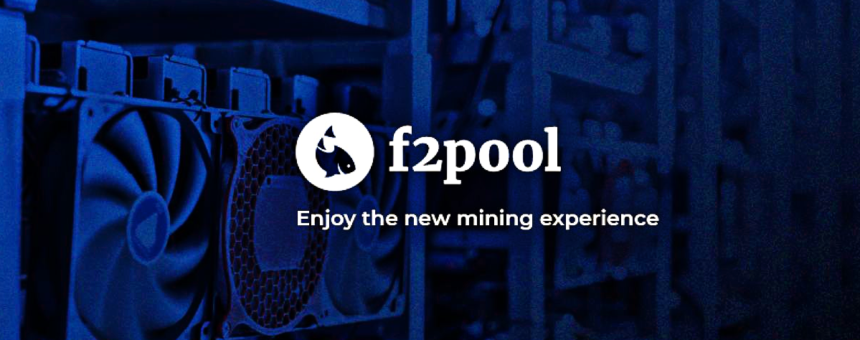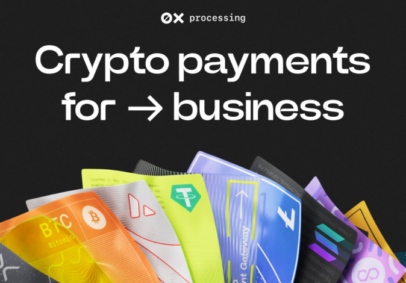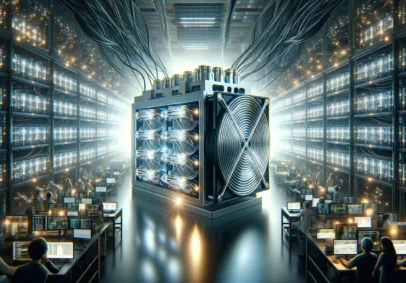How does the top-5 pools member mine and what’s the future of cryptocurrency?

How many pools inscribe NFT collections dedicated to BTC? Well, the F2Pool does. The series are called 10² Islands and are aimed to celebrate pool’s 10th anniversary and the milestones achieved in the Bitcoin and mining community over the past decade. It consists of 100 unique NFTs that symbolize 10 events and inspiring stories from each year between 2013 and 2022. How else can F2Pool describe their ten-year history, except for the NFTs? That’s the question we asked to the pool’s marketing team. They told us about how the company was founded, why this very pool became so popular, and which future is awaiting the crypto mining world.
— That would be great if you introduce your pool briefly. When, why and how was the pool founded? What are your main values and working principles? Which coins are you working with?
Back in 2011, a private pool that is F2Pool’s predecessor, was developed. And in 2013 F2pool was founded by Chun and DiscusFish during the inception of mining industrialization. It quickly became one of the leading mining pools in Asia.
The same year, the first custom Bitcoin ASIC machine was finally shipped by Avalon. This hardware upgrade strengthened the network’s security and fueled Bitcoin adoption. The exponential growth of Bitcoin’s network hashrate, transitioning from home mining to farm mining and igniting the “Gold Rush” for the emerging digital currency, was founded with the new trend of Bitcoin mining.
Speaking about coins, F2Pool began its journey as a Bitcoin and Litecoin mining pool and has subsequently grown into the globally recognized brand as it’s today. The brand is dedicated to innovation and expansion and continues to roll out professional mining tools and services. Today the pool supports 20+ networks. It also is one of the top mining pools for Bitcoin, Litecoin, and Dogecoin. This list includes younger and promising coins such as Kaspa, Ethereum Classic, Ravencoin, and Iron Fish.
— Traditionally, all miners divide themselves into two groups: the first is mining solo, and the second in the pool. Could you tell us briefly how the pool works? What’s the structure? What is a basic working scheme? What are the types?
In short, mining pool is a platform that provides mining technology services. It can be difficult for a miner to find a block and obtain rewards by directly connecting their own mining machine to a popular blockchain network. However, by gathering large amounts of hashrate from various miners, pools have the advantage of capturing blocks and receiving rewards more quickly. After a block is successfully found, mining pools distribute rewards according to the hashrate contributed by miners. This allows miners to obtain stable income by connecting their mining machines to pools.
There are multiple payout schemes according to business strategies for different coins, such as PPS, PPLNS, and FPPS. A certain percentage of pool commission fees will be charged based on the schemes.
— Why is it beneficial to join mining pools instead of mining solo? What’s the average price to join a big pool? And what is yours? When it’s the right time to do it? Which capacities should a miner have?
First, as the nature of pool mining, joining it could help to increase the probability to find blocks. Second, a mining pool with solid tech support would help take care of running equipment. Most required is to connect to the pool server so that you could focus on managing physical mining rigs. Moreover, rewards are based on the shares you submit to a pool which helps miners hashrate together to mine blocks and later distribute the rewards, in this way, miners could basically get regular and stable rewards distributed to them.
The average price to join a mining pool can vary depending on the pool and its fee structure. Pool fees are usually calculated as a percentage of the rewards earned by participants. Although some of them may have higher or lower fees. That’s why it’s essential to research and compare the fees, reputation, and services offered by different pools to find the best fit for your mining goals.
Determining the right time to join a mining pool depends on two main factors.
Mining Difficulty. As this factor increases, it becomes more challenging for individual miners to find blocks. Joining a mining pool helps overcome this difficulty and increases the chances of earning rewards.
Hashing Power. As a solo miner, having a substantial hashing power is crucial to compete with mining pools. Joining a pool allows miners with lower hashing power to collaborate and contribute collectively to the pool’s overall hash rate.
As for the required capacities, miners should have hands-on experience configuring mining devices, basic knowledge of how mining works, rewards and payouts flows, and so on.
— Are there any risks in joining a crypto mining pool? How to minimize them?
Joining a mining pool is one of the most common ways for a miner to participate in mining in PoW, especially on such matures as Bitcoin and Litecoin.
However, choosing an unreliable operator can be risky. To minimize such possibilities, it’s important to do sufficient research before joining any field. This includes choosing a reliable service provider with a proven track record. Look for feedback from the community and verify their qualities. Make sure you have all the necessary knowledge and information before joining. Once you join, monitor your mining activities, update software and firmware, compare your daily revenues, and manage your costs.
In addition, there are many fake websites and phishing activities, so double-check the source to ensure you are visiting the real website and communicating with official personnel.
— You’re one of the TOP-5 pools in the world. Have you come up with any new methods or innovations in organizing working processes that set you apart from others?
The main direction we’re following is supporting popular coins for miners and optimizing our infrastructure with cutting-edge technologies. Here’s the list of advantages that we can share for others not to worry about navigation.
Proven track record. With ten years of experience mining the most Bitcoin blocks of any pool, we have the operational expertise to offer our miners the most comprehensive mining experience.
Stable mining service. We try to provide stable mining service with low latency rates. And surely offer mining services for BTC, LTC, Doge, and 20+ other coins, allowing our customers to choose the most profitable coin to mine at any given time.
Transparent rewards. Our miners can organize workers in multiple mining accounts and quickly view detailed hashrate and performance breakdowns for each worker.
Regular, stable payouts. Securing a large share of PoW networks, combined with our stable payouts, allows our clients to mine with maximum profitability.
VIP experience. Large mining operations require customized support from their mining pool, and our team is available 24/7 to provide world-class mining services.
Opening and operating a successful mining pool requires a significant financial investment and the deployment of robust and reliable infrastructure. To attract miners, we know that it’s important to offer unique features and values, providing reliable customer support is essential for maintaining a positive reputation and retaining miners.
F2Pool provides convenient functions for clients to review their mining history and has customer service with a short response time and numerous service channels. We have received positive feedback from users in over 100 countries and ensure that our nodes are stable and have low latency, resulting in profitable mining for Bitcoin, Litecoin&Dogecoin, Kaspa, and other popular coins.
— There is a stereotype that Russian miners try to open their own pool as soon as they have a start-up capital for that. And American miners, on the contrary, are always investing in their own equipment. The question is: when is it the right time to open your own pool? Are there any advice and a scheme on how to make it profitable?
Opening and operating a successful mining pool requires a significant financial investment and the deployment of robust and reliable infrastructure. To attract miners, it’s important to offer unique features or a compelling value proposition. Effective marketing and promotion are crucial once the pool is operational. Providing reliable customer support is essential for maintaining a positive reputation and retaining miners. Running a profitable mining pool can be challenging due to competition and factors affecting mining profitability, such as cryptocurrency price volatility and network difficulty. Thorough research and careful consideration of financial and operational aspects are necessary before deciding to open a pool.
— Looking a bit forward, how will the crypto mining sphere develop? Which type of mining will lead? In the pool or solo? Why do you think so?
Solo mining is often used in the initial stage of a PoW network. As it gains traction and more people discover its value and potential, the hashrate usually increases significantly. Bitcoin is a prime example of this.
As the network and its ecosystem expand, more people typically join pool mining to receive constant daily rewards. Additionally, specialized mining rigs will be developed and added to the network if mining is profitable enough. This will cause the hashrate to grow significantly, making joining a mining pool a more practical choice.
For the miners who choose to mine with a pool, we are here to provide solid services for them. Our global server deployment ensures a stable mining pool service, while we actively promote green energy mining initiatives. We aim to expand our client base by supporting more regions and attracting more institutional clients. Furthermore, as part of our regional community plan, we are constantly growing our regional community and investing in more tech infrastructure in the different regions to provide miners with a better mining experience.
— More and more coins appear on the market. What do you think about this tendency? Will it fade away or speed up? Which coins are the most promising?
The cryptocurrency market has seen an influx of new coins in recent years. With the continued growth and adoption of blockchain technology, it’s likely that more and more applications and networks will emerge to serve various use cases.
In this dynamic and ever-changing landscape, it’s important to distinguish between projects with solid technology and real community backing, versus those that are simply hyped up during bull markets and disappear during bear markets. Bitcoin, with its solid track record as the most secure network and its significant market cap share, remains the king of the cryptocurrency world.
While we acknowledge the importance of Bitcoin, we also recognize that there may be other promising projects in the market. Our team carefully evaluates and selects networks to support, based on their potential for long-term success. You can find our chosen list of projects on our landing page, including popular coins like Kaspa and Iron Fish. Our team remains committed to identifying and supporting these projects, and we invite everyone to join us on this exciting journey.

